This is a term that is widely used in vintage guitar circles, but it’s meaning may not be immediately obvious. Finish checking, or weather checking as it is also known, refers to the pattern of small cracks, usually comprising a series of parallel lines, but sometimes loosely checkered, that can appear on certain guitars with nitrocellulose finishes. The cracks may be loosely spaced or very tight, and can appear on any part of the guitar.
But what causes the checking? As the two names suggest, these cracks are in the finish (paint) of the guitar and are caused by extreme changes in temperature. Typically a guitar that has got cold and then warmed too quickly: maybe travelling in a cold vehicle, then brought into a warm venue – or flown in an unheated aircraft hold before landing in a warm destination. But this does not mean guitars should not travel, only that they must be allowed to acclimatize gradually.
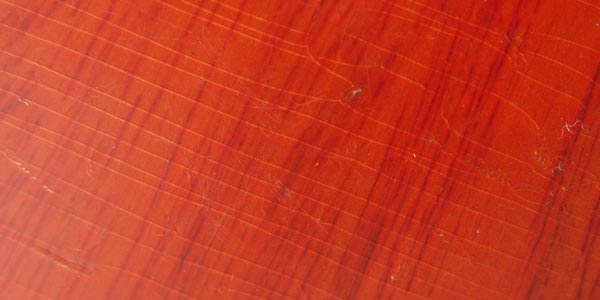
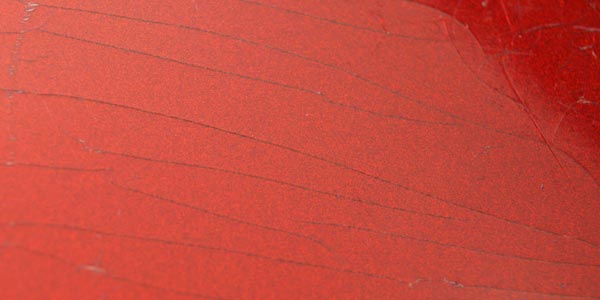
Finish ‘checking’ may actually be in lines rather than checks Figure 1 checking in a translucent Cherry Gibson SG, Figure 2 in the Candy Apple Red of a Gibson Melody Maker
So how do you prevent finish checking?
Guitars will typically travel in hard cases – this naturally protects the instrument from knocks and breakages, but will also protect from sunlight and temperature swings. If an instrument has spent some time travelling in cold conditions it will ultimately get as cold as it’s surroundings. The problems occur when the guitar is quickly brought indoors – perhaps into a hot club, under hotter stage lights. The rapid change in temperature causing the finish to crack; effectively the wood expands more quickly than the finish. So preventing these changes are as simple as waiting for some time before removing guitars from their hardcases, and allowing expansion to occur slowly.
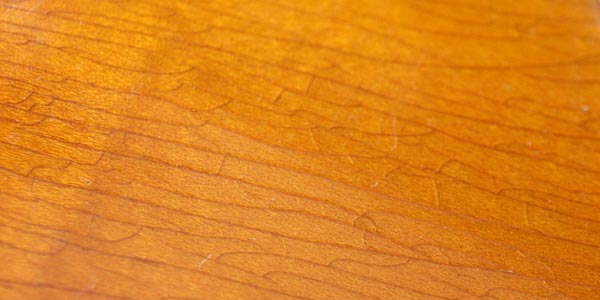
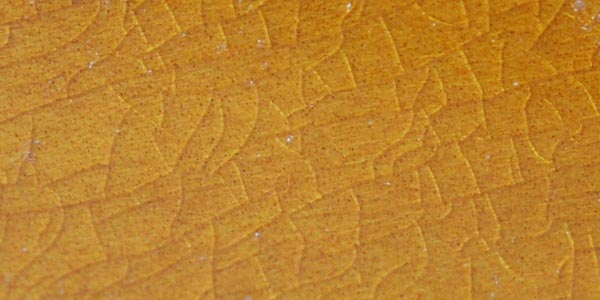
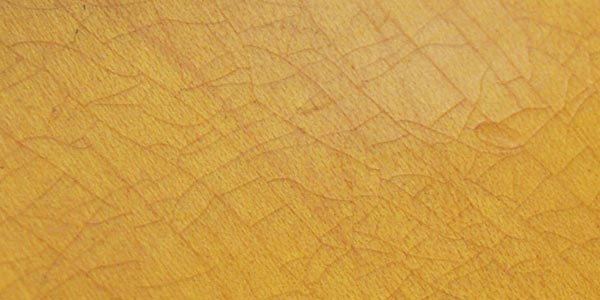
Figures 3 – 5 – in many guitars the checking resemble a mosaic of irregular shapes
Can it be reversed?
Finish checking can not be reversed, but it can be prevented – see Gibson’s recommended procedure for finish care below. Obviously your guitar could be refinished, however this is expensive (see What is the Cost of the Refinishing a Guitar), but, in our opinion at least, unnecessary; finish checking can be considered as the ‘patina’ of a well loved and well used instrument. The majority of older guitars seem to have some level of checking, especially in countries with a range of climatic conditions. In fact the lack of this checking can be an indicator of a non-original finish!
Gibson describe the problem of finish checking in their owner’s manuals as follows:
Abnormal Winter Exposure
Try to keep your guitar at room temperature. If you can’t or if it gets left in the trunk of a car for many hours or days, you run the risk of damaging the Gibson through finish checking.
1. Bring the instrument into a warm room. If you don’t need it right away just let it warm up safely in it’s own case.
2. Use additional caution when a thoroughly chilled instrument is needed immediately:
A. Open case lid about 1 inch allowing warm air to enter slowly.
B. Open lid 4-6 inches fanning out cold air until no condensation appears.
C. Open case lid fully and lift guitar approximately 1 inch from back of case. This allows warm air to circulate in back of the instrument in small amounts.
D. Work instrument up and down in it’s case to expel all the cold air and admit the warm. If no condensation or haze appears, the instrument is ready to remove from the case. It will still feel cold to the touch, but is past the danger point of causing damage.
E. Leave the case open so it too, can warm up thoroughly.
Follow these instructions and you can’t go too far wrong!

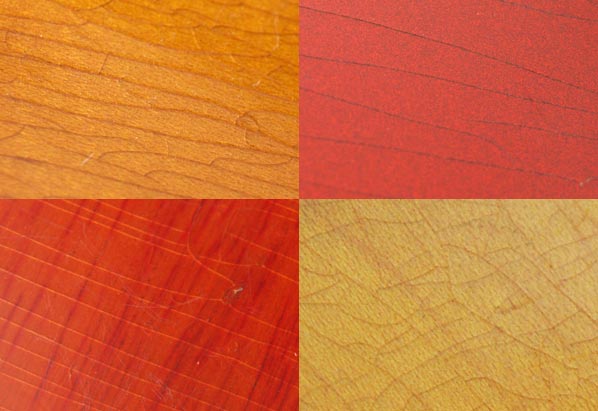
Hi. My Gibson J50 experienced Finish Checking around 1973, going from a cold environment to warm. I got this guitar in 1968. These fine cracks never seemed to affect the sound, although I’m not the most accomplished or knowledgeable guitar player…I personally never realized a sound difference. I’m thinking about selling my guitar as I’m not playing it. Would it be worth it for me to have it refinished, if so, how much would it cost me, ballpark figure, to refinish the entire face of my guitar. Someone offered me a $1000 for it, but I know better, since I read up on the J50’s years ago, and learned even more lately. It’s never had any adjustments since I’ve had it, but doesn’t seem to be affecting anyone else’s playing experience. I could use some guidance here. I sincerely thank you for your advice.
Great article. Will existing checking get worse as time goes on even if the guidelines are followed?
Don’t refinish anything because of a bit of checking! Finish checking is part of the patina of a vintage guitar and many collectors will be expecting to see it as proof of an original finish. An immaculately refinished guitar will still be worth less than a heavily checked guitar with original finish.
Checking shouldn’t get significantly worse if the guidelines are followed, however nitrocellulose finishes are fragile and it may be difficult to keep a guitar 100% check free, especially if it gets played out.
Frankly, I don’t mind a bit of checking. It adds character!